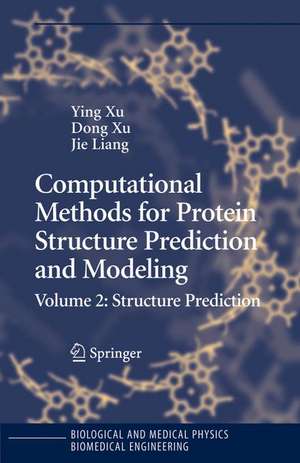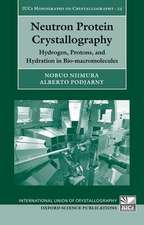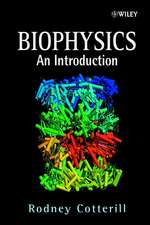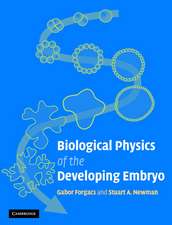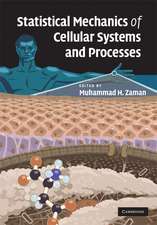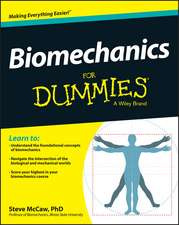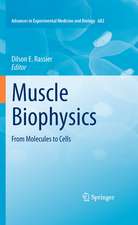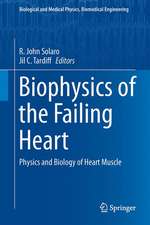Computational Methods for Protein Structure Prediction and Modeling: Volume 2: Structure Prediction: Biological and Medical Physics, Biomedical Engineering
Editat de Ying Xu, Dong Xu, Jie Liangen Limba Engleză Hardback – 15 dec 2006
| Toate formatele și edițiile | Preț | Express |
|---|---|---|
| Paperback (2) | 946.72 lei 43-57 zile | |
| Springer – dec 2010 | 946.72 lei 43-57 zile | |
| Springer – 29 noi 2010 | 950.33 lei 43-57 zile | |
| Hardback (2) | 951.29 lei 43-57 zile | |
| Springer – 15 dec 2006 | 951.29 lei 43-57 zile | |
| Springer – 15 dec 2006 | 954.45 lei 43-57 zile |
Din seria Biological and Medical Physics, Biomedical Engineering
- 5%
 Preț: 1110.32 lei
Preț: 1110.32 lei - 18%
 Preț: 1006.55 lei
Preț: 1006.55 lei - 18%
 Preț: 960.78 lei
Preț: 960.78 lei - 18%
 Preț: 704.11 lei
Preț: 704.11 lei - 18%
 Preț: 967.40 lei
Preț: 967.40 lei - 18%
 Preț: 948.92 lei
Preț: 948.92 lei - 15%
 Preț: 641.71 lei
Preț: 641.71 lei - 15%
 Preț: 644.95 lei
Preț: 644.95 lei - 15%
 Preț: 665.08 lei
Preț: 665.08 lei - 18%
 Preț: 1669.16 lei
Preț: 1669.16 lei - 18%
 Preț: 941.05 lei
Preț: 941.05 lei - 18%
 Preț: 956.81 lei
Preț: 956.81 lei - 18%
 Preț: 950.21 lei
Preț: 950.21 lei - 15%
 Preț: 636.80 lei
Preț: 636.80 lei - 18%
 Preț: 947.50 lei
Preț: 947.50 lei - 15%
 Preț: 636.80 lei
Preț: 636.80 lei -
 Preț: 397.01 lei
Preț: 397.01 lei - 18%
 Preț: 1236.99 lei
Preț: 1236.99 lei - 15%
 Preț: 644.49 lei
Preț: 644.49 lei - 18%
 Preț: 946.55 lei
Preț: 946.55 lei - 15%
 Preț: 712.22 lei
Preț: 712.22 lei - 18%
 Preț: 952.89 lei
Preț: 952.89 lei - 18%
 Preț: 944.36 lei
Preț: 944.36 lei - 18%
 Preț: 1228.29 lei
Preț: 1228.29 lei - 5%
 Preț: 1422.67 lei
Preț: 1422.67 lei - 18%
 Preț: 1393.27 lei
Preț: 1393.27 lei - 15%
 Preț: 651.19 lei
Preț: 651.19 lei - 18%
 Preț: 953.65 lei
Preț: 953.65 lei - 18%
 Preț: 955.88 lei
Preț: 955.88 lei - 15%
 Preț: 644.95 lei
Preț: 644.95 lei - 5%
 Preț: 1098.48 lei
Preț: 1098.48 lei - 18%
 Preț: 959.19 lei
Preț: 959.19 lei - 15%
 Preț: 643.65 lei
Preț: 643.65 lei - 5%
 Preț: 1159.16 lei
Preț: 1159.16 lei - 5%
 Preț: 1102.67 lei
Preț: 1102.67 lei - 18%
 Preț: 952.09 lei
Preț: 952.09 lei - 18%
 Preț: 946.55 lei
Preț: 946.55 lei - 18%
 Preț: 952.09 lei
Preț: 952.09 lei - 15%
 Preț: 703.20 lei
Preț: 703.20 lei - 18%
 Preț: 953.65 lei
Preț: 953.65 lei - 5%
 Preț: 1008.45 lei
Preț: 1008.45 lei - 15%
 Preț: 644.82 lei
Preț: 644.82 lei - 18%
 Preț: 956.03 lei
Preț: 956.03 lei - 15%
 Preț: 647.40 lei
Preț: 647.40 lei
Preț: 951.29 lei
Preț vechi: 1160.10 lei
-18% Nou
Puncte Express: 1427
Preț estimativ în valută:
182.09€ • 197.85$ • 153.05£
182.09€ • 197.85$ • 153.05£
Carte tipărită la comandă
Livrare economică 21 aprilie-05 mai
Preluare comenzi: 021 569.72.76
Specificații
ISBN-13: 9780387333212
ISBN-10: 0387333215
Pagini: 320
Ilustrații: XX, 322 p. 41 illus.
Dimensiuni: 155 x 235 x 21 mm
Greutate: 0.61 kg
Ediția:2007
Editura: Springer
Colecția Springer
Seria Biological and Medical Physics, Biomedical Engineering
Locul publicării:New York, NY, United States
ISBN-10: 0387333215
Pagini: 320
Ilustrații: XX, 322 p. 41 illus.
Dimensiuni: 155 x 235 x 21 mm
Greutate: 0.61 kg
Ediția:2007
Editura: Springer
Colecția Springer
Seria Biological and Medical Physics, Biomedical Engineering
Locul publicării:New York, NY, United States
Public țintă
ResearchCuprins
Protein Structure Prediction by Protein Threading.- De Novo Protein Structure Prediction.- Structure Prediction of Membrane Proteins.- Structure Prediction of Protein Complexes.- Structure-Based Drug Design.- Protein Structure Prediction as a Systems Problem.- Resources and Infrastructure for Structural Bioinformatics.
Notă biografică
Dr. Ying Xu is Regents-GRA Eminent Scholar and Professor at the University of Georgia. Dr. Dong Xu is the Director of the Digital Biology Laboratory at the University of Missouri-Columbia. Dr. Jie Liang is the Director for the Center for Bioinformatics at the University of Illinois at Chicago.
Textul de pe ultima copertă
Volume 2 of this two-volume sequence focuses on protein structure prediction and includes protein threading, De novo methods, applications to membrane proteins and protein complexes, structure-based drug design, as well as structure prediction as a systems problem. A series of appendices review the biological and chemical basics related to protein structure, computer science for structural informatics, and prerequisite mathematics and statistics.
Caracteristici
Presents a comprehensive overview of protein structure prediction methods Each chapter is a self contained review designed to cover (1) definition of the problem and an historical perspective, (2) mathematical or computational formulation of the problem, (3) computational methods and algorithms, (4) performance results, (5) existing software packages, and (6) strengths, pitfalls, challenges, and future research directions Covers topics from De novo methods of protein structure prediction to structure based drug design
